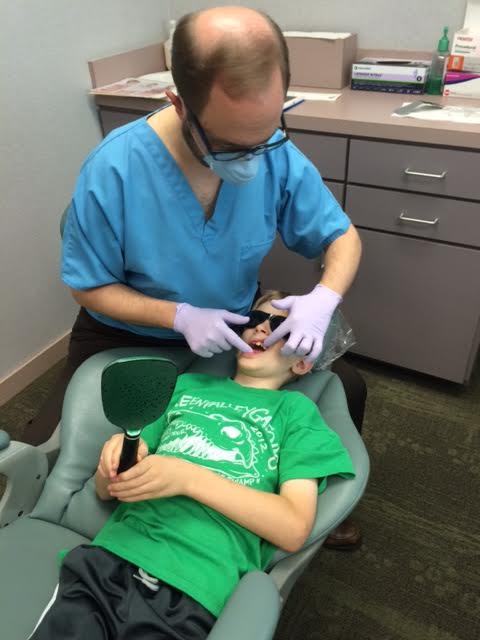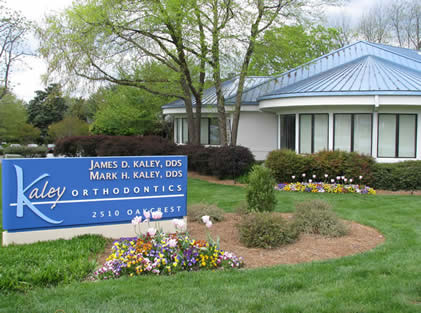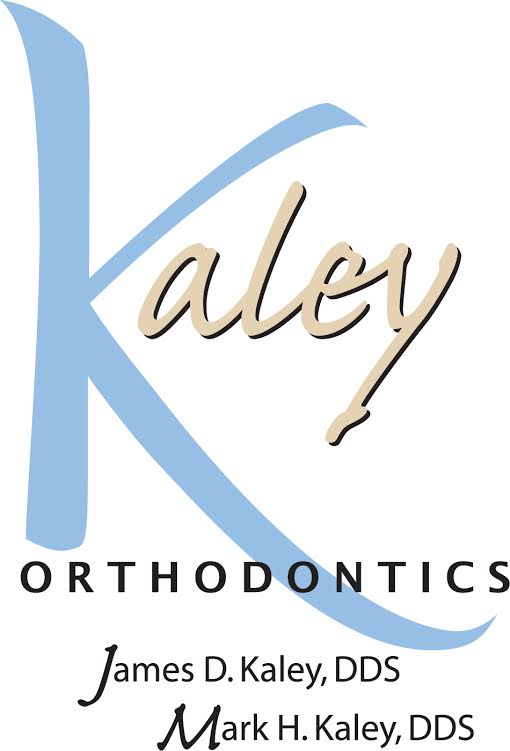Is it Time for Braces?
By Guest Blogger Mark Kaley of Kaley Orthodontics
It is a phrase you may have dreaded hearing from your family dentist: “I think it’s time for your child to see an orthodontist.”
“But she’s only in Kindergarten!,” you think to yourself. “Why so early?”
The American Association of Orthodontists recommends that children visit an orthodontic office by age seven. That may seem like overkill, and the vast majority of patients won’t need braces until all of their permanent teeth have come in (usually between ages 11-14). However, there are a few reasons why it is a good idea to start an early relationship with an orthodontist.
 First of all, visiting an orthodontist does not necessarily mean that there is an immediate problem. It is simply an opportunity to check for any potential issues and allow a specialist to monitor the teeth and jaws as they develop and change as your little one grows. As an orthodontist, I am happy to tell a mom, “we have a few years before we need to think about braces.” However, in the event that there is a problem, I am also happy to catch it before it becomes a major issue.
First of all, visiting an orthodontist does not necessarily mean that there is an immediate problem. It is simply an opportunity to check for any potential issues and allow a specialist to monitor the teeth and jaws as they develop and change as your little one grows. As an orthodontist, I am happy to tell a mom, “we have a few years before we need to think about braces.” However, in the event that there is a problem, I am also happy to catch it before it becomes a major issue.
Occasionally, there are issues that are better to treat in the elementary years than as a teen. One of the most pressing ones is a crossbite. This is when the top teeth are behind the bottom teeth, and it can occur either in the front or back of the mouth or both. A crossbite can create a problem by causing the lower jaw to slide to one side when the patient closes, possibly resulting in a change in the jaw’s growth pattern. A crossbite can also cause excess wear on the teeth since they are not biting properly. It helps to address these issues early to prevent problems from arising as a child grows.
Esthetic issues can also be treated earlier for a good result. While not necessarily a functional problem, severely crowded or protrusive teeth can sometimes cause a child to be self-conscious or embarrassed. Frequently, braces on  only a few teeth can help correct the problem and improve the alignment. Since some severe crowding may require the removal of baby teeth, it is a good idea to get an orthodontist’s opinion in conjunction with your family dentist to determine the best course of action.
only a few teeth can help correct the problem and improve the alignment. Since some severe crowding may require the removal of baby teeth, it is a good idea to get an orthodontist’s opinion in conjunction with your family dentist to determine the best course of action.
Another issue which can benefit from an orthodontic evaluation is the early loss of baby teeth. In addition to the normal functions of teeth, the baby teeth serve as placeholders for the developing permanent teeth. If a baby tooth must be removed early due to a cavity or another problem, the teeth on either side may collapse into the space and prevent the permanent tooth from erupting properly. An orthodontist can help maintain the space or plan for making more space when needed.
 When should your child see an orthodontist? First of all, listen to your family or pediatric dentist. They know your family and child’s history personally and are very skilled in recognizing potential problems. They will let you know when they think it is time for an initial exam. If you have concerns or just want to start making plans for potential future treatment, you can always make an appointment to get information. Finally, if your child expresses concerns about his or her teeth, it never hurts to have an orthodontist take a look.
When should your child see an orthodontist? First of all, listen to your family or pediatric dentist. They know your family and child’s history personally and are very skilled in recognizing potential problems. They will let you know when they think it is time for an initial exam. If you have concerns or just want to start making plans for potential future treatment, you can always make an appointment to get information. Finally, if your child expresses concerns about his or her teeth, it never hurts to have an orthodontist take a look.
Most orthodontists have free or low-cost exams, so visiting one should not be financially prohibitive. Ask friends with braces who they see or your dentist who they would recommend. Find an orthodontist who you and your child feel comfortable with and make sure to ask any questions that you can think of. Your orthodontist is there to help you smile!
Sponsored by Kaley Orthodontics

I have heard great things about Dr Kaley!